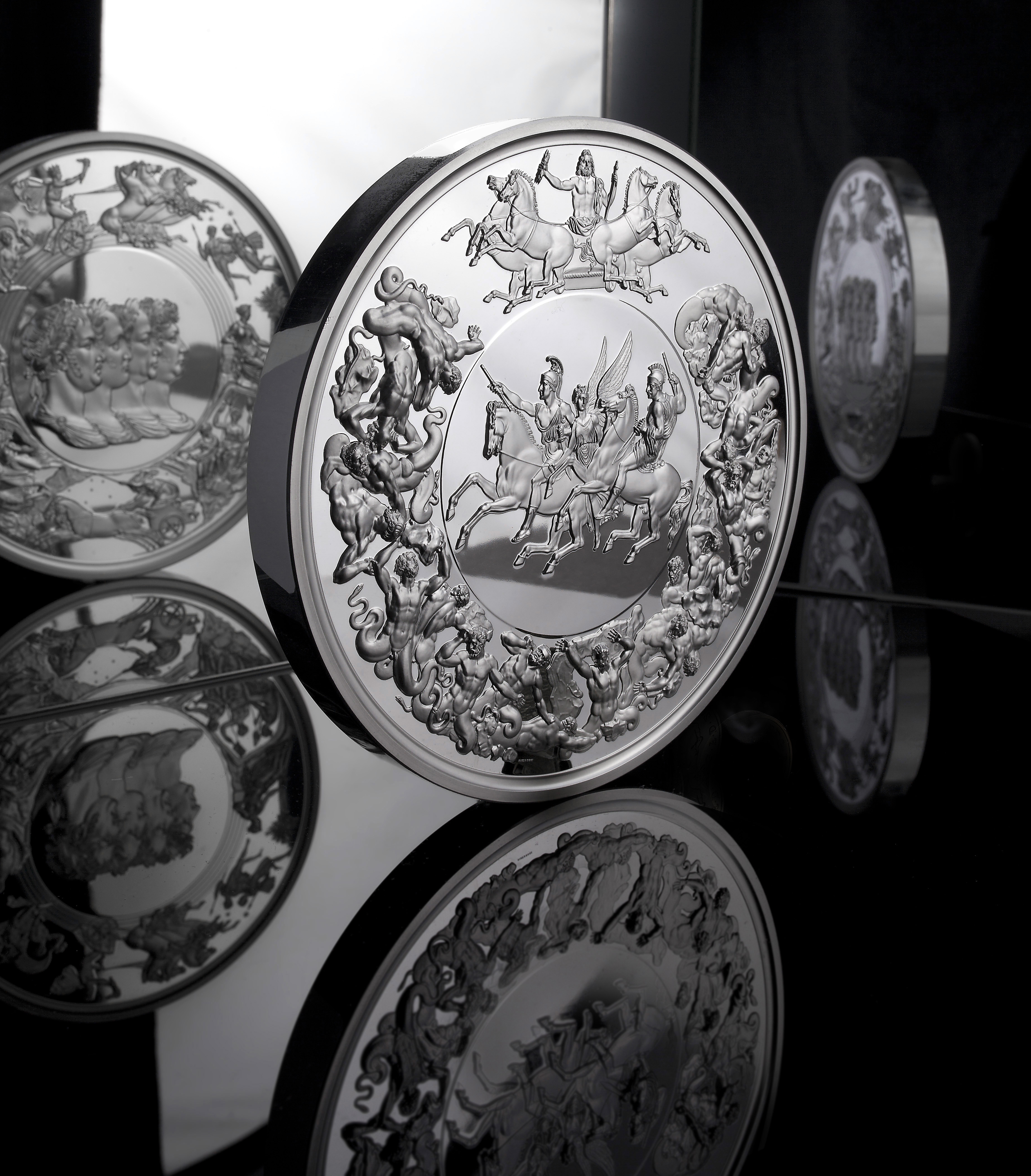After a wait of 200 years, the Allied powers who defeated Napoleon at the Battle of Waterloo have been presented with the Pistrucci Waterloo Medal at a ceremony held at Apsley House, official home of the Duke of Wellington.
Waterloo 200, the Government-backed organisation overseeing the celebrations of the 200th anniversary of the Battle of Waterloo, has worked in partnership with The Samlerhuset Group and Worcestershire Medal Service to have the Medal produced for the very first time in its original size. The Medal was originally commissioned in 1815 and designed by renowned engraver Benedetto Pistrucci – but never struck.
Their Excellencies Dr Emil Brix, Austrian Ambassador, Dr Alexander Yakovenko, Russian Ambassador, and Ms Tania Freiin von Uslar-Gleichen, Deputy Head of Mission at the German Embassy, each received the Pistrucci Medal on behalf of their country. These were presented to them by Lord Douro, son of the Duke of Wellington, following a number of talks including an account of the significance of the Battle of Waterloo and the Allied co-operation by historian Peter Snow.
Angela Pistrucci, 3rd great niece of the late engraver, Sir Evelyn Webb-Carter on behalf of the Waterloo Association, the Royal Mint Museum and the Waterloo Committee from Belgium were also presented with the Medal as well as Lord Douro himself, who received it on behalf of the Duke of Wellington.
Her Majesty the Queen will also be receiving the Waterloo Medal which will be presented to her on a later date.
In addition, His Excellency Mr Guy Trouveroy, Belgian Ambassador, and Mrs Margriet Leemhuis, Deputy Head of Mission at the Dutch Embassy, each received a commemorative silver Waterloo Campaign Medal on behalf of their country for the essential roles their nations also played in the Battle of Waterloo.
The commemorative Pistrucci Medal was commissioned only 10 days after the Allied victory over Napoleon in Waterloo by the first Duke of Wellington’s brother, Sir William Wellesley Pole, who tasked Pistrucci with its design and production.
It took Pistrucci over 30 years to complete the moulds, known as dies, not only due to the mammoth dimensions of the Medal, which is 139mm in diameter, much larger than any previously created, but also due to the complexity and intricacy of the design itself. By the time the dies were completed in 1849 the four Allied sovereigns who were to receive the Medal had all died and it was never struck.
“I am very pleased to receive this newly minted Waterloo Medal on behalf of my father, the Duke of Wellington”, added Lord Douro. “We remember the bravery of the thousands of men from many nations who fought and died in a few hours on the 18th of June 1815. It is very appropriate we do so on Remembrance Day.”
“We are thrilled to be part of such an amazing initiative,” concluded James Deeny, Managing Director of Samlerhuset Western Europe. “Telling history through coins and commemorative medals is at the heart of what we do; I can’t imagine a better example of this than bringing to life Pistrucci’s beautiful and amazingly detailed Waterloo Medal as originally intended by the master engraver.”
Worcestershire Medal Service, Medallist to Her Majesty the Queen, produced the medals on behalf of the Samlerhuset Group, ensuring that every detail in Pistrucci’s legendary medal was faithfully reproduced.

